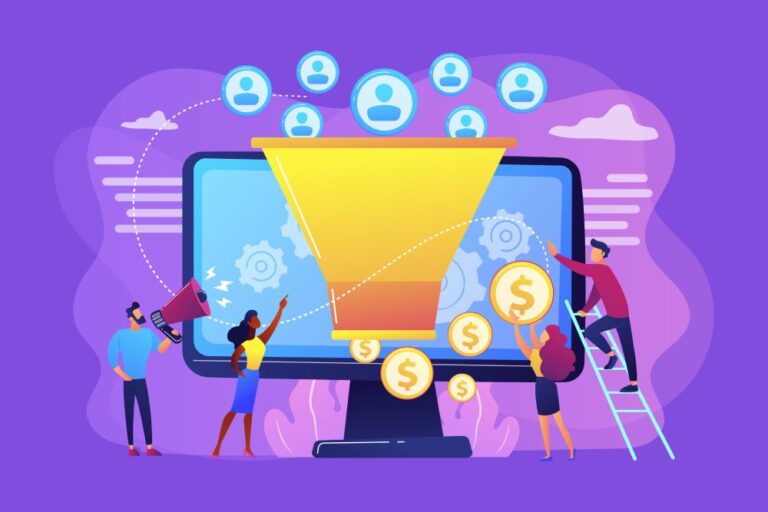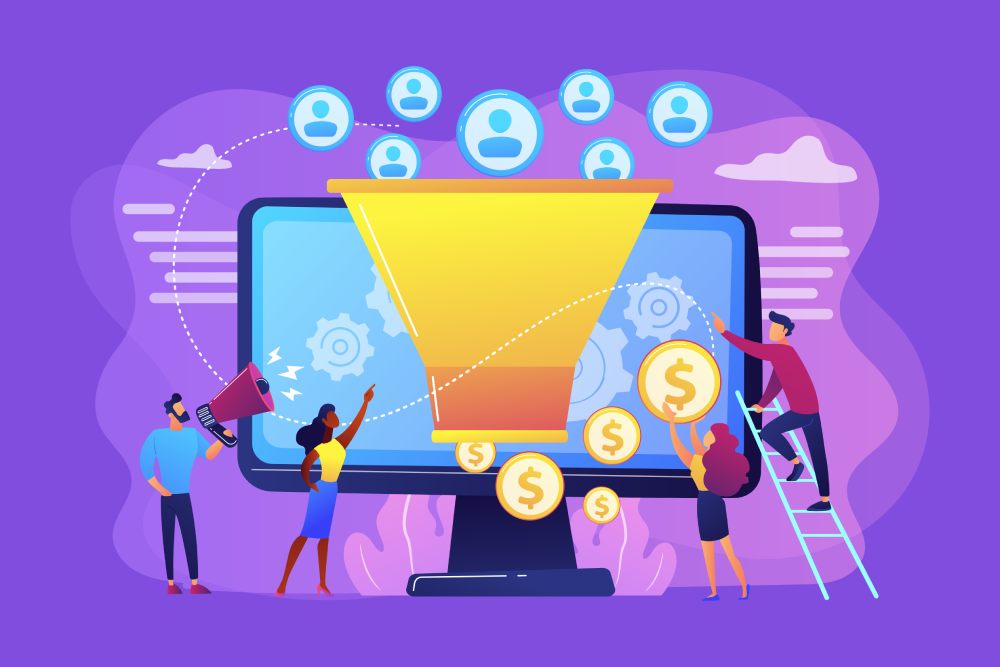In today’s digital advertising landscape, success means guiding prospects through every stage of the funnel—from initial brand awareness all the way to repeat purchases and Return on Ad Spend (ROAS). A full-funnel ad strategy blends brand-building with performance tactics to move users from discovery to conversion and beyond. At the top of the funnel (Awareness), the goal is reach and brand lift; in the middle (Consideration), it’s engagement and lead capture; at the bottom (Conversion), it’s sales and efficiency. Post-sale, Retention and Advocacy turn customers into loyal promoters. By aligning creative, targeting, and budget to each stage, marketers can dramatically improve ROAS and overall campaign ROI.
Awareness Stage: Building Brand Recognition
At the Awareness stage, your audience may understand their problem but is new to your brand. Your aim is to maximize reach, impressions, and brand recall. Effective formats include broad video and display ads—Meta (Facebook/Instagram) Brand Awareness campaigns, YouTube video, TikTok in-feed, and even connected TV (CTV).
- Creative: Story-led, pain-point focused, not hard selling. Use striking visuals, bold text overlays, and clear but soft CTAs like “Learn more”.
- Targeting: Broad interests, lookalikes, contextual placements.
- Key metrics: Reach, impressions, video views, view rate, CTR, CPM, brand lift.
- Optimization tips: Test multiple hooks in the first 3 seconds, keep videos short, and iterate thumbnails/headlines to improve CTR and lower CPC.
Consideration Stage: Engaging Interested Prospects
Once people know your brand, nurture their interest with educational content and stronger value propositions. Think product explainers, comparison guides, case studies, and webinars.
- Formats: Social carousels, YouTube How-To videos, Google Display/Discovery, LinkedIn lead-gen for B2B, content syndication.
- Creative: Benefits, proof points, social proof, objections handled. CTAs like “Download guide”, “Watch demo”, “See pricing”.
- Key metrics: CTR, engagement rate, time on page, content downloads, leads, CPL.
- Optimization tips: Use retargeting for visitors who watched 50%+ of your videos or visited key pages; align landing pages tightly with ad promises; A/B test offers (checklist vs. webinar vs. free tool).
Conversion Stage: Driving Purchases and Sales
This is where interest turns into revenue. Use high-intent formats and direct-response creative to convert warm audiences.
- Formats: Google Search & Shopping (high intent), Performance Max, Meta Advantage+ catalog/dynamic product ads, Pinterest shopping, email/SMS with offers.
- Creative: Clear benefits, pricing, urgency (limited-time offers), trust badges, guarantees, risk reversal.
- Key metrics: Conversion rate (CVR), CPA/CAC, AOV, ROAS, checkout abandonment.
- Optimization tips: Mirror keywords in headlines and LPs, simplify checkout (fewer fields, guest checkout), use dynamic remarketing to show exact products viewed, test incentives (free shipping vs. % off).
Retention Stage: Nurturing Customer Loyalty
Acquisition is expensive—profitable growth comes from keeping customers active. Retention programs increase Lifetime Value (LTV) and allow higher acquisition bids without sacrificing ROAS.
- Tactics: Lifecycle email/SMS, loyalty programs, personalized recommendations, replenishment reminders, win-back campaigns, in-app messages.
- Paid media: Customer match/lookalike audiences, cross-sell/upsell ads for existing buyers.
- Key metrics: Repeat purchase rate, purchase frequency, churn rate, LTV, revenue per user.
- Optimization tips: Onboard with value (quick-start guides), segment by behavior and recency, test incentives for second purchase, highlight new features/collections regularly.
Advocacy Stage: Turning Customers into Promoters
Happy customers reduce acquisition costs through word-of-mouth, reviews, and referrals. Activate them with programs and content that are easy to share.
- Tactics: Referral programs, UGC contests, review requests, ambassador/affiliate programs.
- Creative: Showcase real customer stories and ratings in ads and on-site.
- Key metrics: Referrals, review volume/ratings, UGC submissions, share rate, NPS.
- Optimization tips: Offer double-sided referral rewards, automate review requests post-delivery, repurpose UGC into top-performing ads.
Core Metrics to Master (and How to Improve Them)
- CTR (Click-Through Rate): Indicates relevance and creative strength. Improve with stronger hooks, clearer value props, and hyper-relevant audiences.
- CPC (Cost Per Click): Lower by boosting ad quality/relevance, refining targeting, adding negative keywords, and testing placements/bids.
- CPA/CAC (Cost Per Acquisition): Reduce by optimizing landing page speed/UX, using high-intent keywords/audiences, and tightening retargeting windows.
- Conversion Rate: Lift with message-match, fast pages, social proof, simplified forms, and urgency.
- ROAS (Return on Ad Spend): Improve by raising AOV (bundles, upsells), cutting wasted spend, and focusing budgets on proven audiences/creatives.
Creative, Targeting, and Budget: Best Practices by Funnel Stage
Creative
- Awareness: Storytelling and emotion. Problem framing. Brand codes (consistent colors/fonts/audio).
- Consideration: Benefits, comparisons, FAQs, demos, testimonials.
- Conversion: Offer clarity, urgency, proof (ratings, guarantees), friction-free CTAs.
- Retention/Advocacy: Community, exclusivity, recognition, shareability.
Targeting
- Awareness: Broad interest/lookalikes, contextual, wide geo/age (as relevant).
- Consideration: Engagers (video viewers/site visitors), keyword themes with research intent.
- Conversion: High-intent search, cart/checkout abandoners, product viewers, customer match.
- Retention/Advocacy: Existing customers by RFM (recency, frequency, monetary), VIP segments.
Budget Allocation Heuristics
- Starting point: 60% Awareness, 30% Consideration, 10% Conversion (adjust by sales cycle and baseline demand).
- Channel mix guardrails: 70% proven channels, 20% likely-to-perform, 10% experiments.
- Iteration cadence: Rebalance monthly based on stage-level KPIs and blended ROAS.
Sample Cross-Platform Full-Funnel Plan
- Awareness: TikTok/YouTube short video, Meta Reach, CTV for mass exposure.
- Consideration: Meta video/carousel with product benefits, YouTube how-to, Google Discovery; gated guides/webinars for lead capture (B2B/SaaS).
- Conversion: Google Search & Shopping (high-intent), Meta Advantage+ catalog, dynamic remarketing, email/SMS offers.
- Retention: Customer match campaigns, loyalty promos, replenishment flows, personalized recommendations.
- Advocacy: Referral program push, UGC/review collection, ambassador content in ads.
Optimization Checklist
- Define stage-specific KPIs and targets before launch.
- Map creative and landing pages to each stage (message-match).
- Set up audiences for every stage (broad → engager → high-intent → existing customers).
- Implement proper tracking (conversions, value, offline imports if needed).
- Run ongoing A/B tests: hooks, formats, offers, landing pages.
- Refresh creatives every 2–4 weeks to prevent fatigue.
- Reallocate budget monthly toward best ROAS channels and segments.
Bottom line: Brands that orchestrate the entire funnel—matching creative, targeting, and budget to each stage—consistently see stronger ROAS and scalable growth. Build awareness with breadth, nurture with value, convert with clarity, and grow with retention and advocacy.

